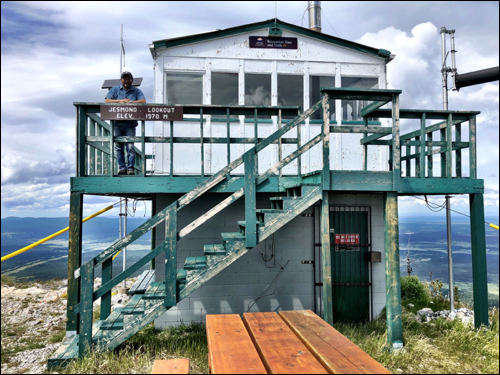
Fire lookouts have played a crucial role in the discovery and prevention of wildfires in all of North America but in particular down the west coast in the Pacific Northwest (PNW) and British Columbia (BC) due to their strategic placement and the vigilance of the individuals who staffed them. Here’s a short history of fire lookouts and their importance in the region:
Early Beginnings: Fire lookouts have a history dating back to the late 19th and early 20th centuries when the PNW experienced rapid urban growth, logging, and increased human activity. As forests became more valuable resources, the threat of wildfires grew. It became evident that a system was needed to detect and manage fires before they could cause widespread damage.

Strategic Placement: Lookouts were typically constructed atop prominent peaks and ridges, providing panoramic views of the surrounding landscapes. This elevated vantage point allowed lookout personnel to spot smoke or fires in their early stages when they were still manageable.
Early Communication: In the early years, communication from lookouts to firefighting personnel was limited to visual signals and signal flags. However, advancements in technology led to the establishment of telephone lines and later, radio communication, which improved the speed and effectiveness of fire reporting and response.
Vigilant Watch: Fire lookouts were staffed by dedicated individuals who spent long hours scanning the horizon for signs of smoke. These lookouts developed a keen eye for identifying potential fire outbreaks and played a critical role in ensuring the swift response of firefighting crews.
Cultural and Historical Significance: Fire lookouts became integral parts of the region’s culture and history. The individuals who staffed these structures formed tight-knit communities, often enduring isolation and challenging weather conditions. Many lookouts were situated in remote and scenic locations, adding to their allure and becoming points of interest for hikers and tourists.
Decline and Modernization: With advancements in technology, such as aerial surveillance, satellite imagery, and automated fire detection systems, the need for manned fire lookouts diminished over time. Many lookout structures were decommissioned, and some fell into disrepair or were repurposed for other uses.
Legacy: Despite their decline, fire lookouts remain iconic symbols of the region’s firefighting history and forest management practices. Many historical fire lookout structures have been preserved and restored as historical landmarks, offering a glimpse into the past and reminding us of the critical role they played in protecting the natural landscapes and communities of the PNW and BC.
In summary, fire lookouts were essential tools in the discovery and prevention of wildfires due to their strategic positioning, vigilant watch, and early communication capabilities. These structures and the individuals who manned them contributed significantly to the conservation of forests and the safety of surrounding communities.
